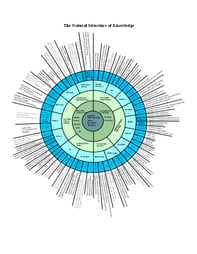Published on
Innovation Instruction Critical for Higher Education Institutions

Our country is emerging from a period of economic uncertainty, but once again, turning to innovation appears to the key element to ensure a prosperous future. If this is true, are our institutions of higher learning adequately preparing the next generation with workforce-readiness skills and the ability to innovate? If you didn’t get the memo, industry is already taking a lead on this effort; they can’t afford to wait.
Just like industry, higher education institutions must differentiate themselves from others in an ever-changing and competitive market. So why are some institutions consistently good at innovating and/or adapting while others seem to be blindsided by change? Is it because of their disciplined innovation process or the knowledge and skills of their faculty and staff? Or is it their determination to build a culture where challenging assumptions is not only encouraged, but expected?
In an overcrowded higher education market, in order to attract high-caliber students, enable graduates to transition into quality careers with a competitive skill-set edge and differentiate themselves, institutions must focus on teaching creativity and innovation.
In a recent study, The Conference Board found that American employers think creativity and innovation are becoming increasingly important in the workforce, and rate finding new hires with these skills to be among the most significant challenges facing CEOs. [1]Industry is not waiting on research to emerge from higher education; again, they can’t wait.
Leading-edge organizations can only succeed in today’s marketplaces and stoke innovation within their business models, products and services with employees who are creative leaders. [2] [3]
Innovation and creativity are at the leading edge of the most significant successes American businesses have enjoyed over the past century. Apple, for example, took an mp3 player, injected artistry and came out with the iPod leading to the rebirth of the corporation and the creation of a new consumer culture. Artistry and imagination are at the core of allowing a technology to transcend the status of “product”.
This creativity, artistry and passion are evident in higher education classrooms across the country. Students experiment in new fields, hone their craft over countless hours and test and re-test their ideas to fully integrate themselves into their fields. These students are taking technologies and injecting the necessary ingredients to breed innovation.
Just like the interplay of the right and left brain, industry is embracing the linkage between creative divergent thinking with convergent linear thinking in the workplace. IBM3 found in a recent study that “innovation has often been thought of as synonymous with invention — technicians in white coats working in labs producing new and unusual outcomes. However, innovation is not invention — it is conceptually much broader.” In their findings, innovation that does not add value is generally futile.
Industry continues to evolve and build on the innovative approach embraced by Apple and IBM. Higher education would be well served to evolve with this mindset as well. Further research and discussion about innovation is needed, but there is insufficient progress in developing innovation training in organizations around the world. This is an opportunity for higher education and, specifically, continuing education professionals to meet this demand.
– – – –
References
[1] “Innovation Begins with Creative Employees,” The Conference Board, June 22, 2010. http://www.conference-board.org/webcasts/ondemand/webcastdetail.cfm?webcastid=2245
[2] “Cultivating organizational creativity in the age of complexity,” IBM, 2010. http://www-935.ibm.com/services/us/gbs/thoughtleadership/ibv-organizational-creativity.html
[3] IBM, “Enterprise innovation accelerator: Creating opportunities for sustainable growth through innovation,” 2012, available from http://public.dhe.ibm.com/common/ssi/ecm/en/gbs03133usen/GBS03133USEN.PDF
Author Perspective: Administrator



